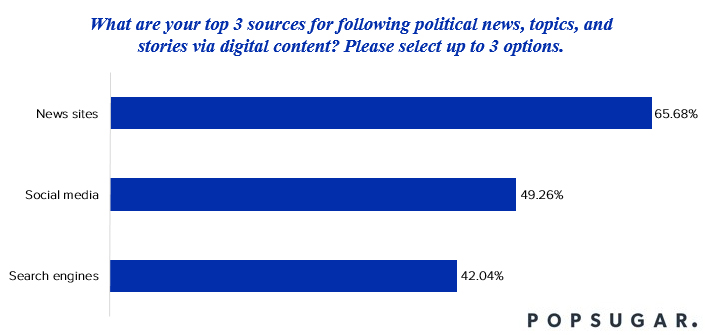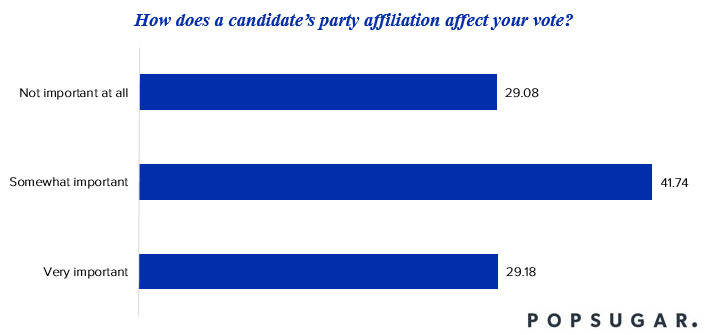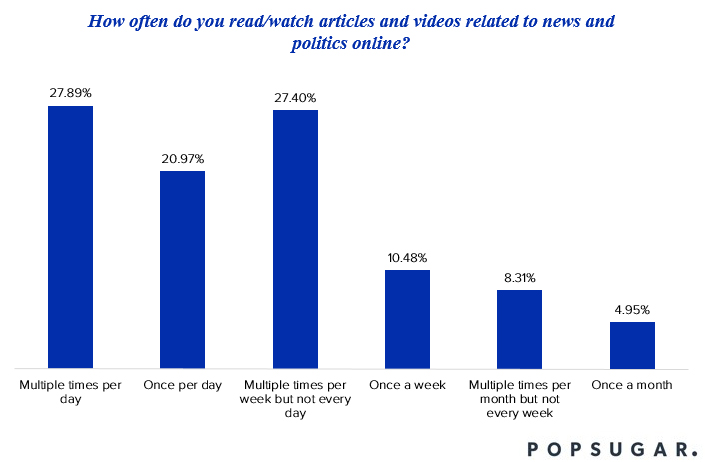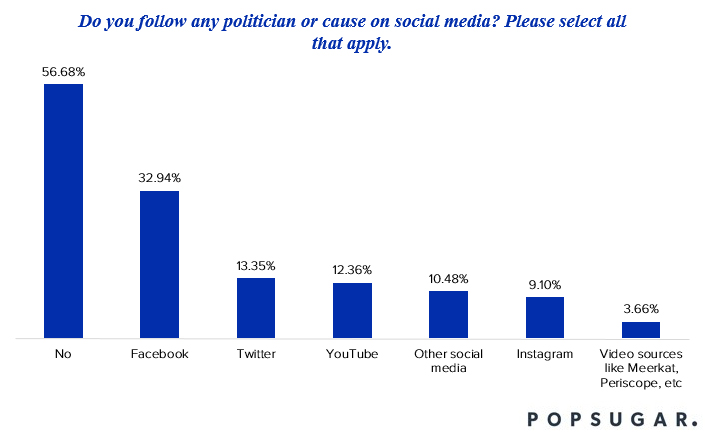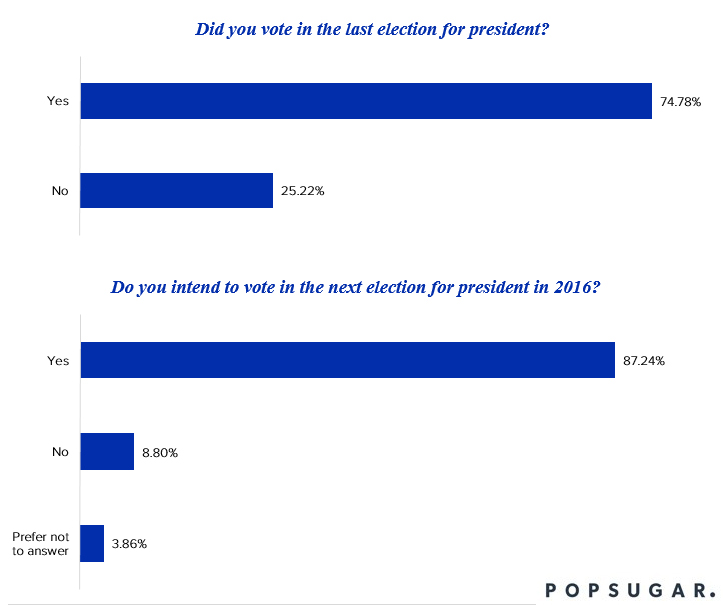Save 50% on a 3-month Digiday+ membership. Ends Dec 5.
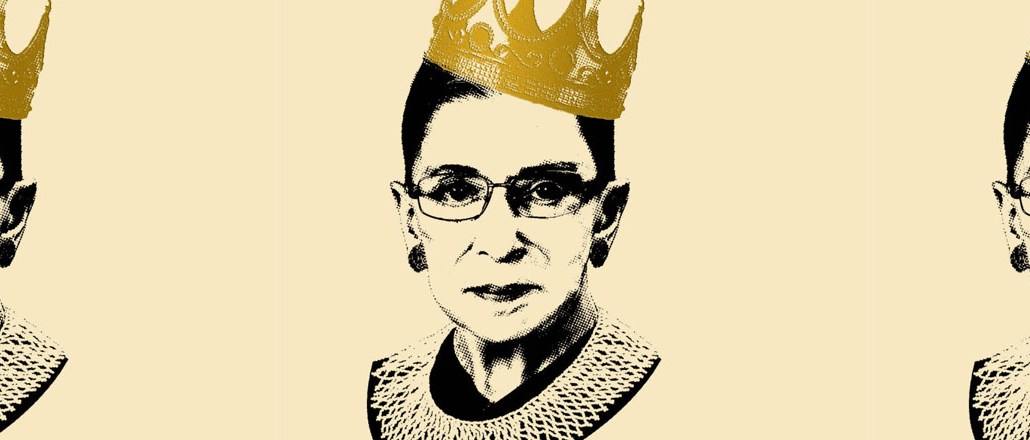
By Rob McLoughlin, VP, Consumer Research, POPSUGAR. For more on millennial women, visit POPSUGAR Insights.
Get Out the Vote campaigns are in full swing, but one crucial demographic won’t need much convincing to head to the polls. A recent study by PopSugar finds that 87 percent of women who are registered to vote expect to do so this year. While no cookie-cutter approach to “women’s issues” is going to win them over, candidates can start by taking their campaigns digital.
“People don’t want to be pandered to, and they don’t want to be tokens,” said Shana Knizhnik, creator of the popular Tumblr page and new book, “The Notorious RBG,” a swelling, often amusing tribute to Supreme Court Justice Ruth Bader Ginsberg.
Shifting media campaigns to reach these women where they are on the web is table stakes for candidates entering today’s races. Just look at the numbers: 75 percent of the study’s respondents voted in 2012. If 74 percent of U.S. women turn out to vote this year (as the study suggests), that’s substantially higher than the general population rate of 59 percent from 2012.
And while 50 percent still say TV news influences their political views, 28 percent give due credit to digital content. Campaigns have to court them there.
Before the web, voters were usually entrenched in small, immediate social networks filled with people who lived and thought just like them. Constantly exposed to the same values and interests, voting along party lines was a no-brainer.
But the web made it easier for those who didn’t drink the Kool Aid to connect with others who saw things the same way. (Of course, this sometimes results in new, digital echo chambers that reinforce rather than challenge personal views.)
“There are more outlets where young people can engage and write op eds,” said Knizhik. “There are more ways for them to get involved.” Now, 42 percent of women say that while party affiliation weighs in, the stances of an individual candidate can override it.
About 41 percent of women say positions—not general party platform—lead them to the polls. Which issues matter most? Health care (65 percent), jobs (61 percent), and the economy (59 percent) top the list. Education costs also worry about half of these voters, perhaps due to student loans still paining the most educated generation so far.
“Women are more than half the population,” said Knizhik. “We’re looking at all the issues; these are all things that young people are looking for candidates to speak to.” Candidates focusing exclusively on traditional women’s issues miss the mark.
It only follows that content consumption is search-driven. Fifty-eight percent look specifically for candidates’ proposals and ideas; thanks to social media, they’re increasingly getting that information straight from the candidates themselves. They also look for stories centered on those key topics (56 percent). And the sheer frequency of consumption of politics- or news-related content online is impressive: 49 percent read or watch something every day.
While the volume is high, 45 percent of women prefer the content itself to be short and concise, with 36 percent gravitating particularly toward interview formats. Support for video is growing, with a preference for recap videos over livestreaming, most likely because of its condensed, to-the-point nature.
“Imagery is more important than ever,” said Knizhik. “And when it comes to memes and soundbytes, being able to put it into short, digestible [pieces] has always been important, but it’s especially important in the age of Twitter.” To follow the news socially, women predominantly use Facebook (81 percent) with its quick but substantive posts.
Women are also more likely to “follow” a politician or social issue on Facebook than on any other social platform (33 percent).
As a sign of the times, 10 percent of those polled name BuzzFeed as a news source they trust most. “With Notorious RBG, we try to set a balance,” said Knizhik. “It rejects the false choice that you have to choose between humor and serious issues. Young women are saying, ‘No, you can do both; it’s okay to take a selfie but then talk about a serious platform.”
What about the 25 percent of women who missed voting in 2012? According to 39 percent of them, it was only because they weren’t yet registered, many because they were too young. These new voters have new digital habits, and they want to be heard.
It’s no coincidence that Hillary Clinton is positioned as the Democratic frontrunner (again), that Carly Fiorina surged in Republican polls this fall, or that a woman on the Supreme Court resonates so deeply with a much younger generation; women’s influence on elections is stronger than ever.
More from Digiday

Overheard in the Media Agency Report: How Assembly, IPG, Horizon and others use AI and will spend on ads in 2026
In this is behind-the-scenes look at Digiday’s 2025 Media Agency Report, ad execs discuss how the GDP and international sports could impact 2026 spend and how agencies and their clients are actually applying AI tools.

Instacart tripled its smart cart store count this year
Instacart’s smart carts are in triple the number of stores this year than they were in 2024, the company told Modern Retail.

Future of Marketing Briefing: The tells and flops that will define Omnicom-IPG mega holdco
The real story will sit in how this newly fused entity behaves — whether it breaks from the patterns that defined both parents or simply scales them.
